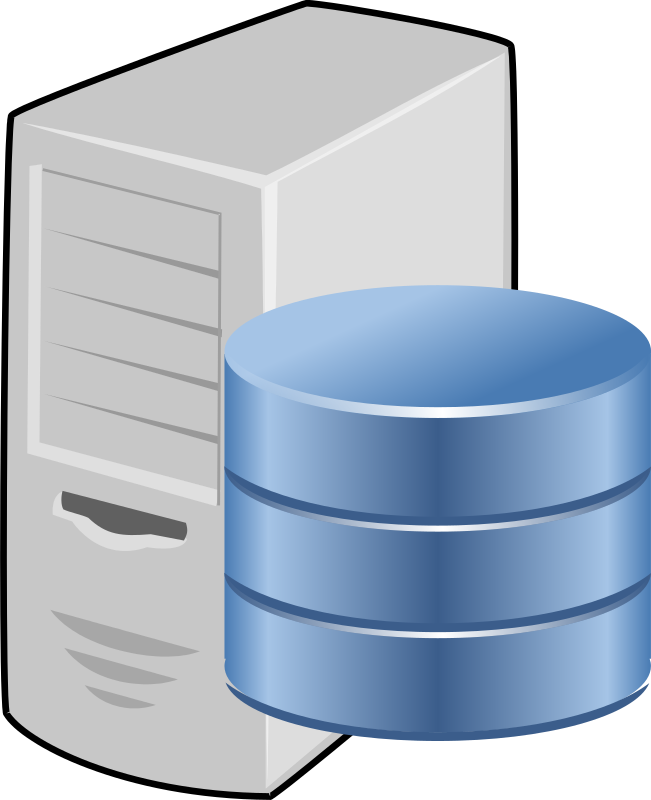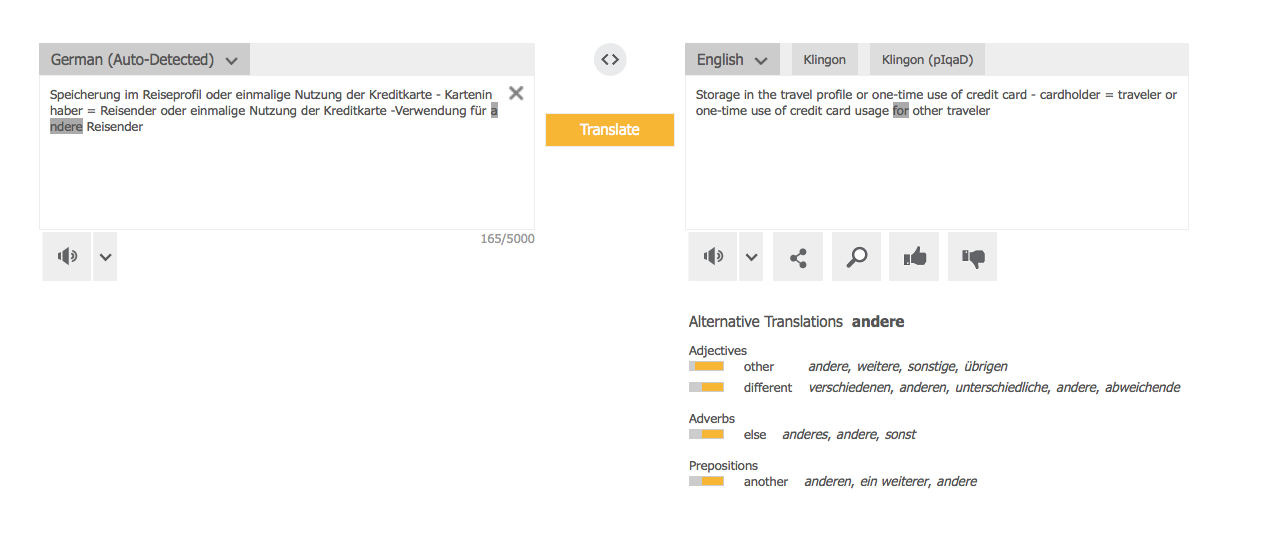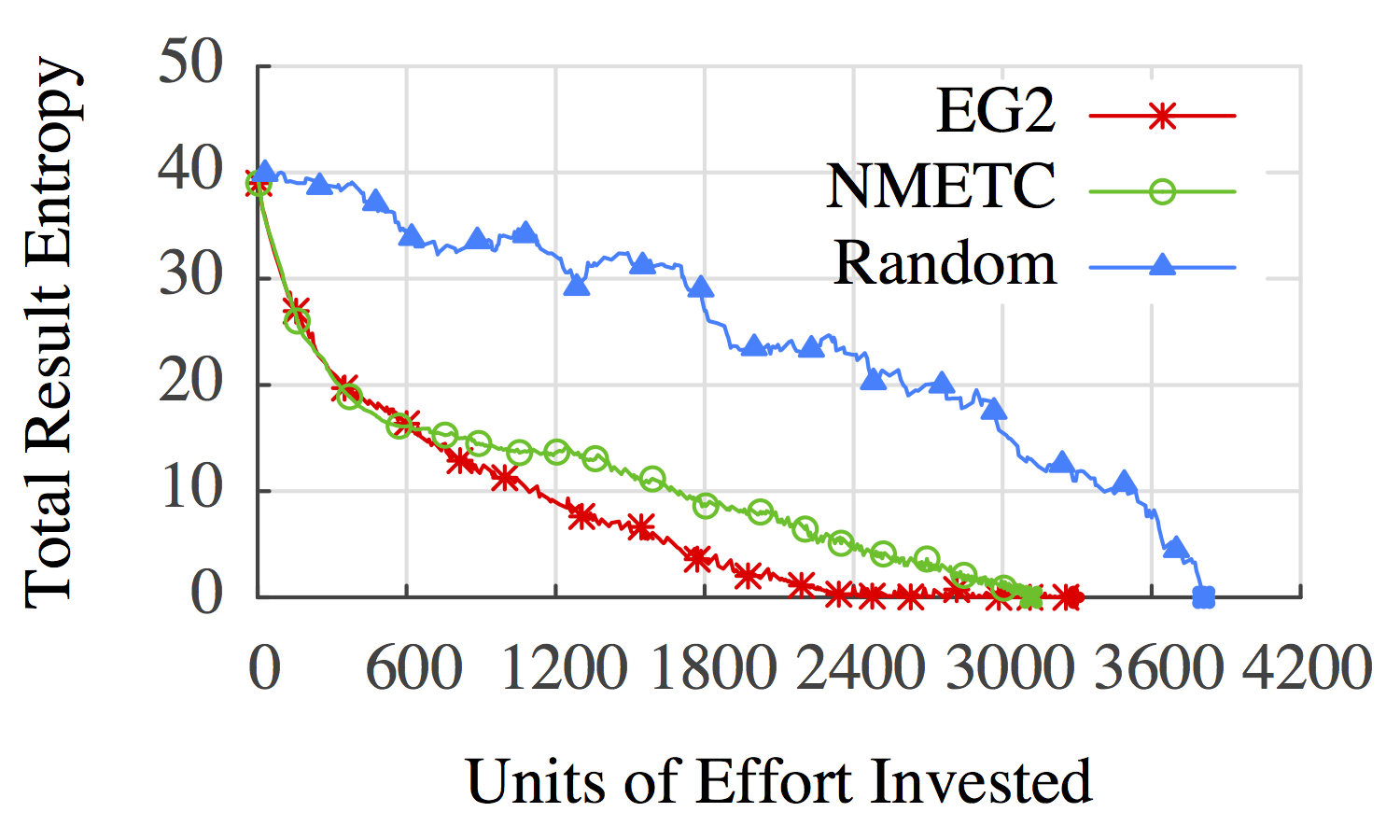Embracing uncertainty with

Joint work with:
PhD Students: Ying Yang, Will Spoth, Aaron Huber, Poonam Kumari, Jon Logan
BS Students: Lisa Lu, Jacob P. Verghese
Alums: Arindam Nandi, Niccoló Meneghetti (HPE/Vertica), Vinayak Karuppasamy (Bloomberg)
Collabs: Ronny Fehling (Airbus), Zhen-Hua Liu (Oracle), Dieter Gawlick (Oracle), Beda Hammerschmidt (Oracle),
Boris Glavic (IIT), Wolfgang Gatterbauer (CMU), Juliana Freire (NYU), Heiko Mueller (NYU), Moises Sudit (UB-ISE)
A Big Data Fairy Tale
Meet Alice

Alice has a Store
 →
→
Alice's store collects sales data

Alice wants to use her sales data to run a promotion

So Alice loads up her sales data in her trusty database/hadoop/spark/etc... server.
 + ?
+ ?
... asks her question ...
 + ? →
+ ? →

... and basks in the limitless possibilities of big data.
Why is this a fairy tale?

It's never this easy...
CSV Import
Run a SELECT on a raw CSV File
- File may not have column headers
- CSV does not provide "types"
- Lines may be missing fields
- Fields may be mistyped (typo, missing comma)
- Comment text can be inlined into the file
State of the art: External Table Defn + "Manually" edit CSV
Merge Two Datasets
UNION two data sources
- Schema matching
- Deduplication
- Format alignment (GIS coordinates, $ vs €)
- Precision alignment (State vs County)
State of the art: Manually map schema
JSON Shredding
Run a SELECT on JSON or a Doc Store
- Separating fields and record sets:
(e.g.,{ A: "Bob", B: "Alice" }) - Missing fields (Records with no 'address')
- Type alignment (Records with 'address' as an array)
- Schema matching$^2$
State of the art: DataGuide, Wrangler, etc...
Data Cleaning is Hard!
Lots of potential data errors!
Running Example
PID, RATING, REVIEW_CT
P123, 4.5, 50.0
P2345, A3, 245.0
P124, 4.0, 100.0
P325, 6.4, 30
'A3' is not a valid rating
Enter the NULL Value
| PID | RATING | REVIEW_CT |
|---|---|---|
| P123 | 4.5 | 50.0 |
| P2345 | NULL | 245.0 |
| P124 | 4.0 | 100.0 |
| P325 | 6.4 | 30 |
3-Valued Logic
$NULL > 4$ is Unknown
(Same for $<$, $\leq$, $\geq$, $\neq$, $=$)
3-Valued Logic - AND
| True | False | Unknown | |
|---|---|---|---|
| True | True | False | Unknown |
| False | False | False | False |
| Unknown | Unknown | False | Unknown |
3-Valued Logic - OR
| True | False | Unknown | |
|---|---|---|---|
| True | True | True | True |
| False | True | False | Unknown |
| Unknown | True | Unknown | Unknown |
3-Valued Logic - NOT
| True | False | Unknown |
|---|---|---|
| False | True | Unknown |
Query Evaluation
- NULL contaminates everything.
- Return only deterministically true rows.
Limitations
- Unintuitive semantics: $$Unknown \equiv \neg Unknown$$
- Silently discarding unknown values: $$(Ratings_1 \bowtie Ratings_1) \subset Ratings_1$$
- Null represents a complete lack of information
V-Tables
| PID | RATING | REVIEW_CT |
|---|---|---|
| P123 | 4.5 | 50.0 |
| P2345 | $NULL_1$ | 245.0 |
| P124 | 4.0 | 100.0 |
| P325 | 6.4 | 30 |
Label nulls with a Subscript
Labeled Nulls
| Expression | Truth Value |
|---|---|
| $NULL_i = 4$ | Unknown |
| $NULL_i = NULL_j$ ($i \neq j$) | Unknown |
| $NULL_i = NULL_j$ ($i = j$) | True |
Solves some erroneously discarded values: $$(Ratings_1 \bowtie Ratings_1) = Ratings_1$$ (but not all)
C-Tables
| PID | RATING | REVIEW_CT | $\phi$ |
|---|---|---|---|
| P123 | 4.5 | 50.0 | $\top$ |
| P2345 | $NULL_1$ | 245.0 | $\top$ |
| P124 | 4.0 | 100.0 | $\top$ |
| P325 | 6.4 | 30 | $\top$ |
Add a 'local condition' column
Selection
$$\sigma_{RATING > 4} RATINGS_1$$
| PID | RATING | REVIEW_CT | $\phi$ |
|---|---|---|---|
| P123 | 4.5 | 50.0 | $\top$ |
| P2345 | $NULL_1$ | 245.0 | $NULL_1 > 4$ |
| P325 | 6.4 | 30 | $\top$ |
(Bag-) Evaluation Semantics
| Expression | Evaluates To |
|---|---|
| $[[\pi_{a_i \leftarrow e_i}(R)]]_{CT}$ | $\{\left< a_i:[[e_i(t)]]_{lazy}, \phi: t.\phi\right>\;|\;t \in [[R]]_{CT}\}$ |
| $[[\sigma_\psi(R)]]_{CT}$ | $\{\left< a_i: t.a_i, \phi: [[t.\phi \wedge \psi(t)]]_{lazy}\right>\;|\;t \in [[R]]_{CT} \wedge \left([[t.\phi \wedge \psi(t)]]_{lazy} \not \equiv \bot \right) \}$ |
| $[[R\times S]]_{CT}$ | $\{\left< a_i: t_1.a_i, a_j: t_2.a_j, \phi: t_1.\phi \wedge t_2.\phi \right>\;|\;t_1 \in [[R]]_{CT} \wedge t_2 \in [[S]]_{CT}\}$ |
| $[[R\uplus S]]_{CT}$ | $\{\left< a_i: t.a_i, \phi: t.\phi\right>\;|\;t \in ([[R]]_{CT} \uplus [[S]]_{CT})\}$ |
C-Tables
'Plug-in' a valuation to get a specific result.
For example, with $\{NULL_1 \rightarrow 5\}$
| PID | RATING | REVIEW_CT |
|---|---|---|
| P123 | 4.5 | 50.0 |
| P2345 | 5 | 245.0 |
| P325 | 6.4 | 30 |
C-Tables
- Pro: 'Hidden' correlations created by the query preserved
- Pro: 'Model' for values decoupled from representation
- Con: Expensive (e.g., Joins may degrade to cross-products)
- Con: Databases don't support labeled nulls
- Con: Generalized projection has side effects
| PID | A | B | $\phi$ |
|---|---|---|---|
| P123 | 4.5 | 2.25 | $\top$ |
| P2345 | $NULL_1$ | $NULL_2$ | $\top$ |
| P124 | 4.0 | 2.0 | $\top$ |
| P325 | 6.4 | 3.2 | $\top$ |
(Must also record that $NULL_2 = \frac{NULL_1}{2}$)
Generalized C-Tables
aka PIP-Tables
aka PIP-Tables
| PID | A | B | $\phi$ |
|---|---|---|---|
| P123 | 4.5 | 2.25 | $\top$ |
| P2345 | $NULL_1$ | $\frac{NULL_1}{2}$ | $\top$ |
| P124 | 4.0 | 2.0 | $\top$ |
| P325 | 6.4 | 3.2 | $\top$ |
(Labeled Nulls + Lazy Arithmetic Expressions)
C-Tables
- Pro: 'Hidden' correlations created by the query preserved
- Pro: 'Model' for values decoupled from representation
- Con: Expensive (e.g., Joins may degrade to cross-products)
- Con: Databases don't support labeled nulls
- Con: Generalized projection has side effects
Back to the beginning
How did the uncertainty arise?
VGTerm
$VGTerm(\ldots)$ constructs new variables
(it's a skolem function)
- $VGTerm('X')$ constructs a new variable $X$
- $VGTerm('X', 1)$ constructs a new variable $X_{1}$
- $VGTerm('X', ROWID)$ evaluates $ROWID$ and then constructs a new variable $X_{ROWID}$
Mimir SQL allows the $VGTerm()$ operator to inlined
SELECT A, VGTerm('X', B)+2 AS C FROM R;
| A | B |
|---|---|
| 1 | 2 |
| 3 | 4 |
| 5 | 6 |
| A | C |
|---|---|
| 1 | $X_2+2$ |
| 3 | $X_4+2$ |
| 5 | $X_6+2$ |
SELECT PID,
CASE WHEN CAN_CAST(RATING AS FLOAT)
THEN CAST(RATING AS FLOAT)
ELSE VGTerm('RATING', ROWID)
END AS RATING,
REVIEW_CT
FROM RATINGS1;
CREATE VIEW FIXED_RATINGS AS
SELECT PID,
CASE WHEN CAN_CAST(RATING AS FLOAT)
THEN CAST(RATING AS FLOAT)
ELSE VGTerm('RATING', ROWID)
END AS RATING,
REVIEW_CT
FROM RATINGS1;
CREATE VIEW FIXED_RATINGS AS SELECT ...
Behind the scenes, we also create a model...
SELECT * FROM RATINGS1;

A distribution for $RATING_{ROWID}$
CREATE VIEW FIXED_RATINGS AS
SELECT PID,
CASE WHEN CAN_CAST(RATING AS FLOAT)
THEN CAST(RATING AS FLOAT)
ELSE VGTerm('RATING', ROWID)
END AS RATING,
REVIEW_CT
FROM RATINGS1;
SELECT PID FROM FIXED_RATINGS WHERE RATING > 4
The query+view+model completely describe the distribution of possible results...
... but how much detail do we actually need?
Uncertainty Representation User Study
Participants were shown a table of 3 products with 3 ratings (e.g., Amazon, Best Buy, Walmart) each
Part 1: The randomly generated ratings were biased to encourage a predictable, but mildly ambiguous ordering of the three products.
Part 2: We used the same randomization, but this time we marked several of the values as uncertain:
| Red Text | value |
| Red Background | value |
| Asterisk | $value*$ |
| Tolerance | $value \pm tolerance$ |
| Range | $low – high$ |
Probability of Agreement With Elicited Order

Time Taken

Takeaway...
- Small, '1-bit' representations can be sufficient
- Small, '1-bit' representations help users make faster decisions
1-Bit Representations
- Make a best guess (Maximize prior probability)
- Plug in the best guess
- Profit?
UDFs allow guesses to be plugged in
SELECT PID,
CASE WHEN CAN_CAST(RATING AS FLOAT)
THEN CAST(RATING AS FLOAT)
ELSE MIMIR_VG_BESTGUESS('RATING', ROWID)
END AS RATING,
REVIEW_CT
FROM RATINGS1;
... but we lose track of which outputs are uncertain
Provenance Recovers Explanations
SELECT PID,
CASE WHEN CAN_CAST(RATING AS FLOAT)
THEN CAST(RATING AS FLOAT)
ELSE MIMIR_VG_BESTGUESS('RATING', ROWID)
END AS RATING,
REVIEW_CT,
TRUE AS MIMIR_IS_DETERMINISTIC_PID,
CAN_CAST(RATING AS FLOAT) AS MIMIR_IS_DETERMINISTIC_RATING,
TRUE AS MIMIR_IS_DETERMINISTIC_REVIEW_CT,
TRUE AS MIMIR_ROW_IS_DETERMINISTIC
FROM RATINGS1;
Performance
PDBench: TPC-H Data, but add random FK violations.
- Query 1: ~TPC-H Q3; 3-way FK Join with Predicates
- Query 2: ~TPC-H Q6; Table Scan with Predicates.
- Query 3: ~TPC-H Q7; 5-way Star Join with Predicates.
- Partition:
- Separate query fragments compute 'certain' results and one or more classes of uncertain results.
- TupleBundle:
- Compute and summarize 10 sampled results in parallel
- Inline:
- UDFs dynamically inject best guess values into the query.
| Strategy | Q1 | Q2 | Q3 |
|---|---|---|---|
| Inline | 85.5s | 676.6s | 103.3s |
| TupleBundle | 8.2s | 55.2s | 9.8s |
| Partition | >1hr | 739.7s | >1hr |

- On-Demand Data Curation makes data exploration easier.
- "Best-Guess" results streamline analytics.
... if the DB communicates the resulting uncertainty.
Questions?
Backup Slides
Industry says...


My phone is guessing, but is letting me know that it did


Easy interactions to accept, reject, or explain uncertainty

Easy access to: Provenance, Alternatives, and Confidence
Communication
- Why is my data uncertain?
- How bad is it?
- What can I do about it?
What if a database did the same?
- A: Standard SQL.
- B: Annotated Output.
- C: Subway Diagram.
- D: Result Explanations.
 Demo
Demo
Mimir is a DB Overlay
Mimir virtualizes uncertainty
How?
Labeled Nulls
$Var(\ldots)$ constructs new variables
- $Var('X')$ constructs a new variable $X$
- $Var('X', 1)$ constructs a new variable $X_{1}$
- $Var('X', ROWID)$ evaluates $ROWID$ and then constructs a new variable $X_{ROWID}$
Lazy Evaluation
Variables can't be evaluated until they are bound.
So, we allow arbitrary expressions to represent data.
- $X$ is a legitimate data value.
- $X+1$ is a legitimate data value.
- $1+1$ is a legitimate data value, but can be reduced to $2$.
A lazy value without variables is deterministic
Mimir SQL allows the $Var()$ operator to inlined
SELECT A, VAR('X', B)+2 AS C FROM R;
| A | B |
|---|---|
| 1 | 2 |
| 3 | 4 |
| 5 | 6 |
| A | C |
|---|---|
| 1 | $X_2+2$ |
| 3 | $X_4+2$ |
| 5 | $X_6+2$ |
Selects on $Var()$ need to be deferred too...
SELECT A FROM R WHERE VAR('X', B) > 2;
| A | B |
|---|---|
| 1 | 2 |
| 3 | 4 |
| 5 | 6 |
| A | $\phi$ |
|---|---|
| 1 | $X_2>2$ |
| 3 | $X_4>2$ |
| 5 | $X_6>2$ |
When evaluating the table, rows where $\phi = \bot$ are dropped.
C-Tables
- Original Formulation [Imielinski, Lipski 1981]
- PC-Tables [Green, Tannen 2006]
- Systems
- Orchestra [Green, Karvounarakis, Taylor, Biton, Ives, Tannen 2007]
- MayBMS [Huang, Antova, Koch, Olteanu 2009]
- Pip [Kennedy, Koch 2009]
- Sprout [Fink, Hogue, Olteanu, Rath 2011]
- Generalized PC-Tables [Kennedy, Koch 2009]
Labeled nulls capture a lens' uncertainty
CREATE LENS PRODUCTS
AS SELECT * FROM PRODUCTS_RAW
USING DOMAIN_REPAIR(DEPARTMENT NOT NULL);
is (almost) the same as the query...
CREATE VIEW PRODUCTS
AS SELECT ID, NAME, ...,
CASE WHEN DEPARTMENT IS NOT NULL THEN DEPARTMENT
ELSE VAR('PRODUCTS.DEPARTMENT', ROWID)
END AS DEPARTMENT
FROM PRODUCTS_RAW;
| ID | Name | ... | Department |
|---|---|---|---|
| 123 | Apple 6s, White | ... | Phone |
| 34234 | Dell, Intel 4 core | ... | Computer |
| 34235 | HP, AMD 2 core | ... | $Prod.Dept_3$ |
| ... | ... | ... | ... |
CREATE LENS PRODUCTS
AS SELECT * FROM PRODUCTS_RAW
USING DOMAIN_REPAIR(DEPARTMENT NOT NULL);
Behind the scenes, a lens also creates a model...
SELECT * FROM PRODUCTS_RAW;

An estimator for $PRODUCTS.DEPARTMENT_{ROWID}$
... but databases don't support labeled nulls
Labeled Nulls Percolate Up
SELECT A, VAR('X', B)+2 AS C FROM R;
Mimir dispatches this query to the DB:
SELECT A, B FROM R;
And for each row of the result, evaluates:
SELECT A, VAR('X', B)+2 AS C FROM RESULT;
Generating Explanations
All uncertainty comes from labeled nulls in the expressions that Mimir evaluates for each row of the output.
- Why is the data uncertain?
- All relevant lenses referenced in
VAR('X', B)+2. - How uncertain?
- Estimate by sampling from
VAR('X', B). - How do I fix it?
- Each lens fixes one well-defined type of error.
Lazy evaluation can cause problems
SELECT R.A, S.C FROM R, S WHERE VAR('X', R.B) = S.B;
Mimir dispatches this query to the DB:
SELECT R.A, S.C, R.B AS TEMP_1, S.B AS TEMP_2 FROM R, S;
And for each row of the result, evaluates:
SELECT A, C FROM RESULT WHERE VAR('X', TEMP_1) = TEMP_2;
UDFs allow the DB to interpret labeled nulls
SELECT R.A, S.C FROM R, S
WHERE S.B = MIMIR_VG_BESTGUESS('VARIABLE_X', R.B);
... but we lose the ability to explain outputs
Selection (Filtering)
SELECT NAME FROM PRODUCTS
WHERE DEPARTMENT='PHONE'
AND ( VENDOR='APPLE'
OR PLATFORM='ANDROID' )
Row-level uncertainty is a boolean formula $\phi$.
For this query, $\phi$ can be as complex as: $$DEPT_{ROWID}='P\ldots' \wedge \left( VEND_{ROWID}='Ap\ldots' \vee PLAT_{ROWID} = 'An\ldots' \right)$$
Too many variables! Which is the most important?
What is important?
Data Cleaning
Which variables are important?
The ones that keep us from knowing everything
$$D_{ROWID}='P' \wedge \left( V_{ROWID}='Ap' \vee PLAT_{ROWID} = 'An' \right)$$
$$A \wedge (B \vee C)$$
Naive Approach
Consider a game between a database and an impartial oracle.
- The DB picks a variable $v$ in $\phi$ and pays a cost $c_v$.
- The Oracle reveals the truth value of $v$.
- The DB updates $\phi$ accordingly and repeats until $\phi$ is deterministic.
Naive Algorithm: Pick all variables!
Less Naive Algorithm: Minimize $E\left[\sum c_v\right]$.
Exponential Time Bad!
The Value of What We Don't Know
$$\phi = A \wedge (B \vee C)$$
- Generate Samples for $A$, $B$, $C$
- Estimate $p(\phi)$
- Compute $H[\phi] = -\log\left(p(\phi) \cdot (1-p(\phi))\right)$
Entropy is intuitive:
$H = 1$ means we know nothing,
$H = 0$ means we know everything.
Information Gain
$$\mathcal I_{A \leftarrow \top} (\phi) = H\left[\phi\right] - H\left[\phi(A \leftarrow \top)\right]$$
Information gain of $v$: The reduction in entropy from knowing the truth value of a variable $v$.
Expected Information Gain
$$\mathcal I_{A} (\phi) = \left(p(A)\cdot \mathcal I_{A\leftarrow \top}(\phi)\right) + \left(p(\neg A)\cdot \mathcal I_{A\leftarrow \bot}(\phi)\right)$$
Expected information gain of $v$: The probability-weighted average of the information gain for $v$ and $\neg v$.
The Cost of Perfect Information
Combine Information Gain and Cost
$$f(\mathcal I_{A}(\phi), c_A)$$
For example: $EG2(\mathcal I_{A}(\phi), c_A) = \frac{2^{\mathcal I_{A}(\phi)} - 1}{c_A}$
Greedy Algorithm: Minimize $f(\mathcal I_{A}(\phi), c_A)$ at each step
Experimental Data
- Start with a large dataset.
- Delete random fields (~50%).
Experimental Queries
Simulate an analyst trying to manually explore correlations.
- Train a tree-classifier on the base data.
- Convert the decision tree to a query for all rows where the tree predicts a specific value.
Cost vs Entropy: Credit Data

EG2: Greedy Cost/Value Ordering
NMETC: Naive Minimal Expected Total Cost
Random: Completely Random Order
Cost vs Entropy: Product Data

EG2: Greedy Cost/Value Ordering
NMETC: Naive Minimal Expected Total Cost
Random: Completely Random Order